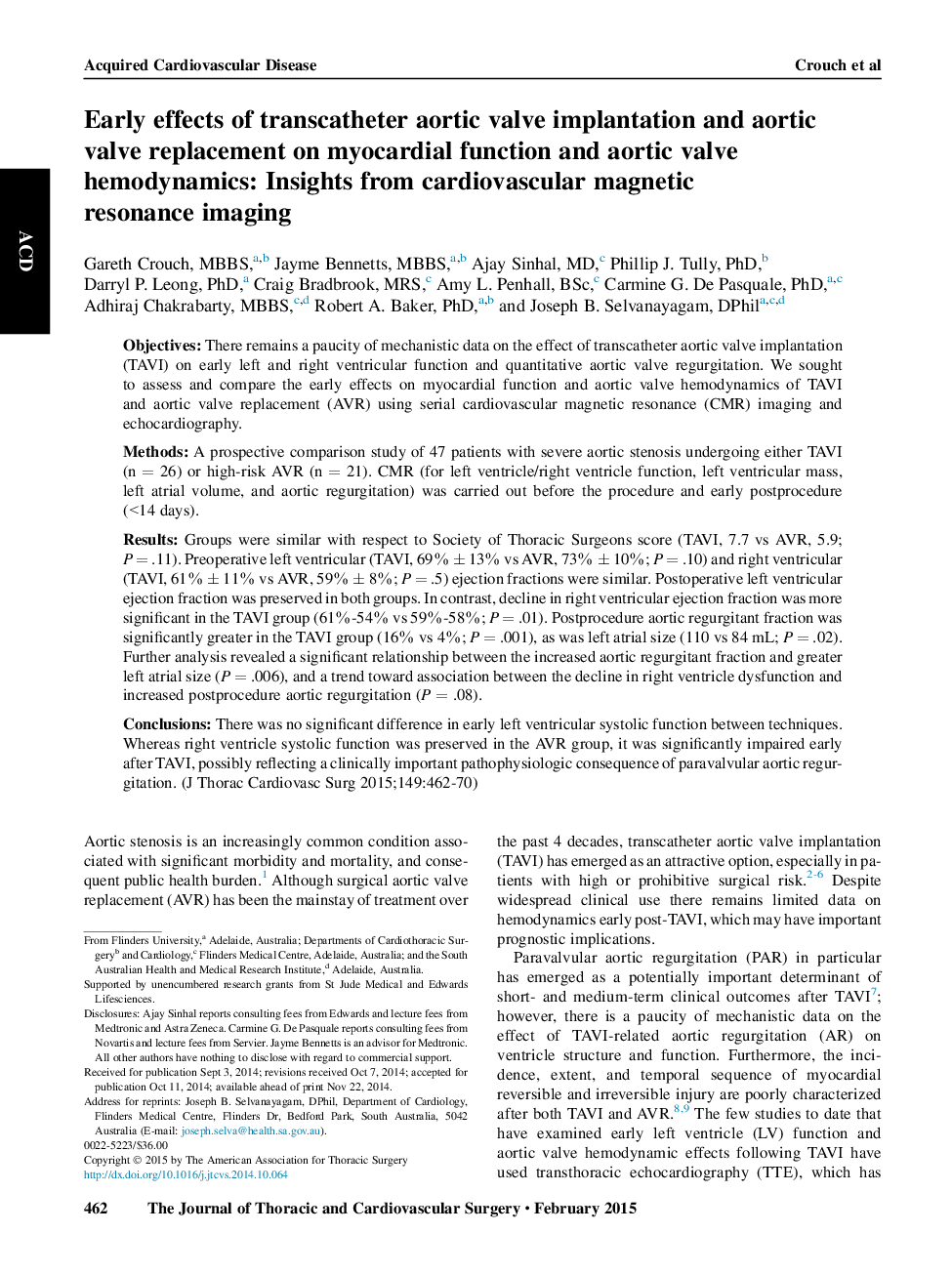| Article ID | Journal | Published Year | Pages | File Type |
|---|---|---|---|---|
| 2980126 | The Journal of Thoracic and Cardiovascular Surgery | 2015 | 9 Pages |
ObjectivesThere remains a paucity of mechanistic data on the effect of transcatheter aortic valve implantation (TAVI) on early left and right ventricular function and quantitative aortic valve regurgitation. We sought to assess and compare the early effects on myocardial function and aortic valve hemodynamics of TAVI and aortic valve replacement (AVR) using serial cardiovascular magnetic resonance (CMR) imaging and echocardiography.MethodsA prospective comparison study of 47 patients with severe aortic stenosis undergoing either TAVI (n = 26) or high-risk AVR (n = 21). CMR (for left ventricle/right ventricle function, left ventricular mass, left atrial volume, and aortic regurgitation) was carried out before the procedure and early postprocedure (<14 days).ResultsGroups were similar with respect to Society of Thoracic Surgeons score (TAVI, 7.7 vs AVR, 5.9; P = .11). Preoperative left ventricular (TAVI, 69% ± 13% vs AVR, 73% ± 10%; P = .10) and right ventricular (TAVI, 61% ± 11% vs AVR, 59% ± 8%; P = .5) ejection fractions were similar. Postoperative left ventricular ejection fraction was preserved in both groups. In contrast, decline in right ventricular ejection fraction was more significant in the TAVI group (61%-54% vs 59%-58%; P = .01). Postprocedure aortic regurgitant fraction was significantly greater in the TAVI group (16% vs 4%; P = .001), as was left atrial size (110 vs 84 mL; P = .02). Further analysis revealed a significant relationship between the increased aortic regurgitant fraction and greater left atrial size (P = .006), and a trend toward association between the decline in right ventricle dysfunction and increased postprocedure aortic regurgitation (P = .08).ConclusionsThere was no significant difference in early left ventricular systolic function between techniques. Whereas right ventricle systolic function was preserved in the AVR group, it was significantly impaired early after TAVI, possibly reflecting a clinically important pathophysiologic consequence of paravalvular aortic regurgitation.
